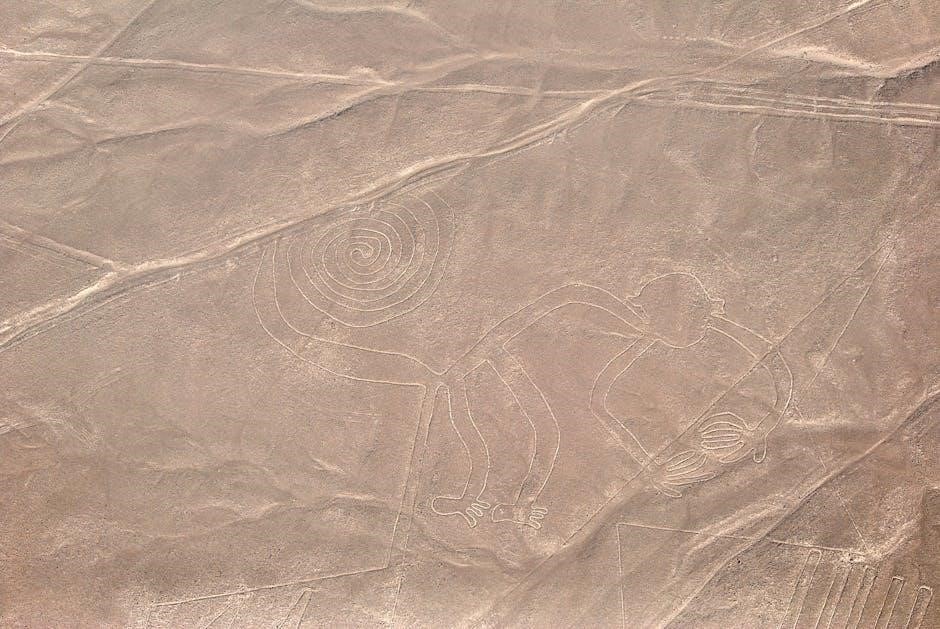
manual assisted cough
Manual Assisted Cough: A Comprehensive Guide
Manual Assisted Cough (MAC) is a technique designed to aid individuals with weakened respiratory muscles in clearing airway secretions․ MAC involves applying external pressure to the thoracic or abdominal region, synchronizing with the patient’s cough effort to enhance expiratory force and effectiveness․

What is Manual Assisted Cough (MAC)?
Manual Assisted Cough (MAC) is a cough augmentation technique․ MAC is a manual method employed to bolster the effectiveness of a cough․ It’s particularly beneficial for individuals with compromised respiratory muscle strength or neurological conditions affecting their ability to generate a strong, productive cough․ MAC can be known as quad coughing․ The technique involves a caregiver or trained individual applying external pressure to either the thoracic or abdominal region in coordination with the patient’s voluntary cough effort․ This external support enhances the expiratory flow, aiding in the expulsion of mucus and other secretions from the airways․ The goal is to mimic the action of strong abdominal and intercostal muscles, thus improving airway clearance and reducing the risk of respiratory complications․ MAC targets the inspiratory and expiratory phases of the cough cycle, through assisted inspiration, assisted expiration and their combination․ Proper technique and timing are essential for optimal results and patient comfort․
Indications for Manual Assisted Cough
Manual Assisted Cough (MAC) is indicated for individuals experiencing difficulty clearing airway secretions due to weakened respiratory muscles or impaired cough function․ Common conditions necessitating MAC include neuromuscular diseases such as muscular dystrophy, spinal muscular atrophy, and amyotrophic lateral sclerosis (ALS); Spinal cord injuries, particularly those affecting the cervical or thoracic regions, often result in reduced abdominal and intercostal muscle strength, leading to ineffective cough․ MAC is also beneficial for patients with neurological disorders like cerebral palsy or stroke, where impaired motor control can compromise cough effectiveness․ In these cases, a weak cough or a lot of mucus, may need an assisted cough․ It is also used to assist patients with neuromuscular disease or spinal cord injuries․ Additionally, individuals recovering from surgery or experiencing respiratory complications such as pneumonia or chronic obstructive pulmonary disease (COPD) may benefit from MAC to facilitate airway clearance․ The appropriateness of MAC should be determined by a healthcare professional through a comprehensive patient assessment․
Contraindications and Precautions
While Manual Assisted Cough (MAC) can be a valuable technique, certain contraindications and precautions must be considered․ MAC is generally contraindicated in individuals with unstable spinal conditions or acute rib fractures, as the applied pressure could exacerbate these conditions․ Caution should be exercised in patients with osteoporosis or other conditions that increase the risk of fractures․ Patients with abdominal aortic aneurysms or recent abdominal surgery should avoid abdominal thrust techniques due to the risk of complications․ It’s essential to avoid applying pressure over the xiphoid process to prevent injury․ Before performing MAC, assess for any pre-existing conditions that could be negatively impacted․ Communicate with the patient throughout the procedure, monitoring for any signs of discomfort or distress․ Proper training in MAC techniques is crucial to minimize the risk of injury․ If the patient experiences pain, discontinue the procedure immediately․ A thorough evaluation by a healthcare professional is necessary to determine the suitability of MAC for each individual․
Patient Assessment Before MAC
Prior to initiating Manual Assisted Cough (MAC), a comprehensive patient assessment is crucial․ Begin by reviewing the patient’s medical history, noting any respiratory conditions, neuromuscular diseases, spinal cord injuries, or recent surgeries․ Assess the patient’s current respiratory status, including breathing pattern, respiratory rate, and oxygen saturation․ Auscultate the lungs to evaluate breath sounds and identify areas of retained secretions․ Evaluate the patient’s cough effectiveness, noting the strength and productivity of their natural cough․ Assess the patient’s pain level and any potential contraindications to MAC․ Evaluate spinal stability and the presence of rib fractures․ Explain the MAC procedure to the patient, ensuring they understand the steps involved and potential benefits and risks․ Observe the patient’s ability to follow instructions and cooperate with the technique․ Assess their muscle strength and ability to participate actively․ Consider the patient’s overall physical condition and tolerance for manual techniques․ This thorough assessment helps determine the appropriateness of MAC and guides the selection of the most suitable technique․
Techniques for Performing Manual Assisted Cough
Several Manual Assisted Cough (MAC) techniques exist, each tailored to different patient needs and conditions․ The Thoracic Thrust technique involves applying pressure to the chest wall during the expiratory phase of the cough․ The Abdominal Thrust (Heimlich-type) technique involves applying an upward thrust to the abdomen, assisting with forceful exhalation․ The Epigastric Area technique targets the upper central abdomen, using inward and upward pressure to promote cough and airway clearance․ Proper hand placement and coordination are essential for all techniques․ The caregiver should communicate clearly with the patient, instructing them to take deep breaths and cough forcefully․ The manual assistance should synchronize with the patient’s expiratory effort, augmenting their cough․ Monitor the patient’s response throughout the procedure, adjusting pressure and technique as needed․ Observe for signs of discomfort, pain, or adverse effects․ Ensure the patient is positioned comfortably and securely․ Select the appropriate technique based on the patient’s condition, body habitus, and caregiver comfort level․ Always prioritize patient safety and comfort during MAC․
Thoracic Thrust Technique
The Thoracic Thrust technique is a manual assisted cough method focusing on chest wall compression․ The caregiver positions themselves behind the seated or semi-recumbent patient․ With hands placed on the lower rib cage, the caregiver instructs the patient to take several deep breaths․ As the patient initiates a cough, the caregiver applies a firm, inward and upward thrust on the chest wall․ The thrust should synchronize with the patient’s expiratory effort, augmenting the cough’s force․ Maintain extended arms while applying pressure․ Avoid excessive force to prevent injury․ Observe the patient’s response, adjusting pressure as needed․ Ensure the patient is stable and supported․ This technique is suitable for patients with weak abdominal muscles but relatively intact chest wall function․ Clear communication is essential for effective coordination․ Monitor for signs of discomfort or pain․ Document the technique used and patient response․ Consider alternative techniques if the thoracic thrust is ineffective or poorly tolerated․ Proper training is crucial for safe and effective application․ The goal is to enhance expiratory airflow and clear secretions․ The caregiver’s forceful arm replaces the individual’s weak muscles․
Abdominal Thrust (Heimlich-type) Technique

The Abdominal Thrust technique, resembling the Heimlich maneuver, assists cough by increasing abdominal pressure․ Position the patient sitting upright in a bed, if possible․ Stand behind the patient and wrap your arms around their abdomen, just below the rib cage․ Make a fist with one hand and place the thumb side against the patient’s abdomen․ Grasp your fist with the other hand․ As the patient attempts to cough, deliver a quick, inward and upward thrust․ Coordinate the thrust with the patient’s expiratory effort․ Avoid excessive force to prevent injury․ Use a smooth motion․ It may take practice․ Ensure the patient has no contraindications․ Monitor the patient’s response and adjust pressure․ This method is effective for patients with weak abdominal muscles․ Clear communication is essential for proper coordination․ Document the technique used and patient response․ If ineffective or poorly tolerated, consider alternative techniques․ Proper training is crucial for safe application․ The goal is to enhance expiratory airflow and clear secretions․ Be cautious when applying abdominal thrusts․ This technique replaces weak abdominal and intercostal muscles․ It is a cough augmentation technique․ Remember to talk to your doctor before trying this․ Some people shouldn’t try an assisted cough․
Epigastric Area Technique
The Epigastric Area Technique targets the upper central abdomen to facilitate cough․ Locate the epigastric area, situated between the costal margins and the subcostal plane․ Position the patient comfortably, ideally in a seated or semi-recumbent position․ Place the heel of one hand or both hands over the epigastric area․ As the patient initiates a cough, apply firm, inward, and upward pressure․ Coordinate the manual pressure with the patient’s expiratory effort․ Avoid applying pressure directly over the sternum or ribs․ Monitor the patient’s response and adjust pressure accordingly․ Ensure the patient has no contraindications․ Communicate clearly with the patient throughout the procedure․ The technique aims to augment abdominal muscle contraction during cough․ Proper hand placement is crucial for effectiveness․ This technique can assist patients in generating a stronger cough․ It may promote airway clearance․ Consider the patient’s comfort and tolerance․ Document the technique used and the patient’s response․ This technique is an alternative to thoracic or abdominal thrusts․ It may be better tolerated by some patients․ Always prioritize patient safety․ Use caution and avoid excessive force․ The caregivers forceful arm replaces the individuals weak abdominal muscles․
Coordination and Timing of Assisted Cough
Effective Manual Assisted Cough (MAC) relies heavily on proper coordination and timing between the caregiver and the patient․ The caregiver’s actions must synchronize with the patient’s respiratory cycle to maximize cough effectiveness․ Begin by instructing the patient to take several deep breaths․ On the final breath, as the patient initiates an expiratory effort, the caregiver applies the chosen MAC technique, such as a thoracic or abdominal thrust․ The pressure applied should coincide precisely with the onset of the patient’s cough․ It is crucial to avoid applying pressure before or after the cough attempt․ Smooth, coordinated movements are essential․ Poor timing can reduce cough effectiveness․ Practice and communication between the caregiver and patient are vital for optimal results․ Observe the patient’s chest and abdomen movement to anticipate the cough․ Encourage the patient to cough forcefully during the maneuver․ Adjust the timing and pressure based on the patient’s response․ Proper coordination enhances airway clearance․ It reduces the risk of discomfort or injury․ The caregivers forceful arm replaces the individuals weak abdominal and intercostal muscles․ Always prioritize patient comfort and safety․

Monitoring Effectiveness of MAC
After performing Manual Assisted Cough (MAC), continuous monitoring is essential to assess its effectiveness and adjust the technique as needed․ Observe the patient’s cough effort, noting the strength, frequency, and ability to clear secretions․ Auscultate the patient’s lungs before and after MAC to evaluate changes in breath sounds and the presence of retained secretions․ Document the amount, color, and consistency of any expectorated mucus․ Assess the patient’s subjective experience, including their perceived ease of breathing and comfort level․ Monitor vital signs, such as oxygen saturation and respiratory rate, to detect any signs of respiratory distress․ If the patient exhibits increased work of breathing or declining oxygen saturation, consider modifying the MAC technique or seeking further medical evaluation․ If the patient has a weak cough or a lot of mucus, you may need an assisted cough․ A thorough auscultation examination will provide a baseline to help determine which techniques to use and to determine effectiveness of the techniques․ Regular monitoring helps optimize the benefits of MAC and ensure patient safety․
Potential Complications of MAC
While Manual Assisted Cough (MAC) is generally safe, potential complications should be recognized and monitored for․ Musculoskeletal injuries, such as rib fractures or muscle strains, can occur, especially in patients with osteoporosis or fragile bones․ Excessive pressure during MAC may lead to abdominal discomfort, nausea, or even vomiting․ In rare cases, internal organ damage or pneumothorax (collapsed lung) could result from improper technique or excessive force․ Cardiovascular complications, such as changes in blood pressure or heart rate, might occur due to the Valsalva maneuver or increased intrathoracic pressure․ Patients with unstable spines or recent surgeries should be carefully assessed to avoid exacerbating their conditions․ It’s crucial to use appropriate hand placement and pressure based on the patient’s size, age, and underlying health conditions․ Careful monitoring and proper technique can minimize the risk of potential complications․ Assisted Breathing and Coughing Techniques can only be performed with patients who have a stable spine and no rib fractures․ Talk to your doctor before trying this․
Integrating MAC with Other Airway Clearance Techniques

Manual Assisted Cough (MAC) is most effective when integrated into a comprehensive airway clearance regimen․ Combining MAC with techniques like postural drainage, chest percussion, and vibration can further mobilize and loosen secretions in different lung segments․ Mucolytic medications or nebulized saline may also be used to thin secretions, making them easier to clear with MAC․ Mechanical insufflation-exsufflation (MI-E) devices can be used in conjunction with MAC to augment cough flow and improve secretion removal․ Prioritizing these techniques will improve cough effectiveness․ Coordinating MAC with breathing exercises, such as diaphragmatic breathing or glossopharyngeal breathing, can enhance inspiratory capacity and cough strength․ The timing and sequence of these techniques should be individualized based on the patient’s needs, tolerance, and response․ Regular assessment and adjustments to the treatment plan are essential to optimize airway clearance and prevent respiratory complications․ A thorough auscultation examination will provide a baseline to help determine which techniques to use and to determine effectiveness of the techniques․ Assisted Breathing and Coughing Techniques can only be performed with patients who have a stable spine and no rib fractures․

